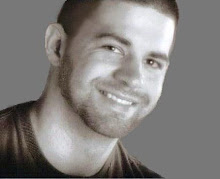I'll start by stating there's no clever reason for the lack of blog posts other than lack of prioritization, which is something I hope to change in the next few weeks. I hope to start at a weekly pace, and see if I can up it from there.
Now, that said, I'm going to look like an ass here and post something that is not entirely new, and in fact is something I posted in a previous blog roughly a year ago (which in turn is adapted from a paper I wrote for a Political Leadership class - hence the APA style). Still, it's interesting and relevant, I think, and fits the overall theme of this blog, so insert it I will. New content within seven days, or...probably nothing, to be honest, with the exception of further loss of credibility - which in a way is pretty harsh, no?
Well, regardless, I ramble. Psuedo new post follows:
From its onset, the creation of the All Volunteer Force under the Nixon administration had been considered publicly a resounding success; after the first three years of implementation, the highest foreseen hurdle of meeting recruitment numbers seemed to have been crossed, with troop levels similar to that of the draft at quality levels surpassing those previous to All Volunteer Force implementation (Moskos, 1982). However, a decade's worth of All Volunteer Force utilization quickly revealed flaws not immediately visible, flaws dealing specifically with maintenance. Though active duty force levels were decreased to accommodate predicted decrease in enlisted availability, even reaching those numbers proved to be difficult, creating failed recruitment goals, as well as an overall decrease in quality of new enlistees: in 1964, "one in six of the draftees and one in eight of the enlistees…had some college," whereas the number had decreased to roughly one in twenty five by 1982, despite a rise in education levels in the general American populace (Moskos, 1982).
To counteract such dismal prospects, the military began a marketing campaign in the early eighties geared to sell the Army to politicians and the general public as the best military in existence, designed with the sole purpose of misleading for the purpose of attracting more recruits (Henderson, 1990). Quality tests were remade to make comparisons of All Volunteer Force recruits seem as high quality as those before implementation of the Force, and nuclear tensions prevented any real war to break out that would test the size limitations of the standing army (Henderson 1990), which included a reserve force hundreds of thousands smaller than the amount mandated by Congress (Henderson 1990).
With the nuclear umbrella eliminated with the end of the Cold War, the current situation in Iraq is at last testing the true flaws of the All Volunteer Force, forcing the military to adopt various waiver programs geared to increase numbers. In 2006, the age limitation for enlistees was raised not once, but two times (Burgess, 2006), from 35 to 40 and from 40 to 42 (Burgess, 2006), while quota limitations on low quality recruits are challenged by decreasing standards on quality control tests again. Regardless of these attempts to increase the recruiting pool, the Army continues to miss recruiting goals (Associated Press, 2007), creating a recruitment crisis similar to that predicted by General Bartlett, who stated "in the next war 'we will fight outnumbered and with little, if any, technological superiority' (Henderson, 1990)" in a briefing before Army officers in 1987.
Given the United States' current issues in recruitment while trying to manage an All Volunteer Force, a discussion of possible solutions to include possible reinstitution of the draft will assuredly take place sometime in the very near future. As such conversations will likely be difficult and fraught with political controversy, a most ideal environment for conducting such discussions and possible implementation must be researched, and a thorough acknowledgement of previous instances of draft implementation would provide invaluable data to that ideal, as would a deep investigation of contemporary attitudes as to who should be allowed to serve and under what conditions.
In other words, when dealing with this recruitment crisis proves inevitable, national leaders must be in tune with precepts catered to the contemporary environment for successful promotion and implementation of the inevitably controversial move.
What can be said, however, is either through reimplementation of some sort of selective - or universal, for that matter - service system or through isolated legislation, the inevitible first step in dealing with this crisis will be repeal of the military's 'Don't Ask, Don't Tell' policy in favor of a personnel policy more accomodating to open sexuality. That said, it should be considered of highest national importance that the discussions and debates necessary for such a change to take place happen now, so that the transition to such a change will seem inevitable rather than controversial.
Sources:Associated Press (2007). Army Misses Recruitment Goal for Second Straight Month. Foxnews.com. Retrieved on July 26, 2007 from http://www.foxnews.com/story/0,2933,288693,00.html
Burgess, Lisa (2006). Army Raising Maximum Enlisted Age. Military.com. Retrieved on July 26, 2007 from http://www.military.com/features/0,15240,102539,00.html
Henderson, William D. (1990). The Hollow Army: How the U.S. Army is Oversold and Undermanned. New York, NY: Greenwood Press.
Moskos, Charles C. (1982). Social Considerations of the All volunteer Force. In General Brent Snowcroft, Military Service in the United States (pp.129-150). Englewood Cliffs, NJ.
That's all for now, folks.
Quick note: stay tuned to your local film festival(s): the DADT documentary Ask Not is making the rounds, and you may see a familiar face or two as main subjects of the film.
25 April 2008
Subscribe to:
Comments (Atom)


